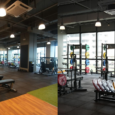Photo from AseanBasketballLeague.com
Our country loves basketball, that’s no secret. We have a lot of basketball leagues in the country, both amateur and professional, that we Filipino basketball fans love to monitor and watch every year.
There’s the PBA, PBA D-League, UAAP, NCAA, and the FIlOil Flying V tournament, among others. But there’s one more league that people tune in to and love to support: the Asean Basketball League.
For those who aren’t aware, the ABL is a league that features six club teams which each represent one of the six participating countries (Philippines, Singapore, Hong Kong, Vietnam, Malaysia and Taiwan) where Filipino players are pitt with/against international ones and local superstars from the said Asian countries.
It was launched in 2009 with a mission of developing the sport in Southeast Asia and nearby regions. Some of the talent that the ABL have produced have gone on to have successful careers in other leagues such as the PBA like Stanley Pringle, Mo Tautuaa Chris Banchero. A few PBA players have also seen action in the ABL such as Eric Menk, Asi Taulava, Leo Avenido and Josh Urbiztondo.
I got a chance to ask ABL chief operating officer Jericho Ilagan a few questions on their success, the challenging part of running the league, and the measures they’re taking to further promote the ABL to their Filipino audience.
*****
The ABL has just completed another season. Can you tell us why the league remains so successful throughout its existence in Asia?
The ASEAN Basketball League, which just concluded its 7th season, is still the only multi-country professional basketball league in Asia. As we have seen in FIBA-based competitions, nothing brings fans together more than their love for their own country/club/team and be able to cheer for their players against visiting opponents. Foreigners and expats based in the region also appreciate it when they get to see their own teams visiting the countries where they’re currently based in. Our diverse approach when it comes to our imports also brings in a different type of competition than what most fans are used to.
What’s been the challenging things of handling a league like the ABL?
The league has so many moving parts. From flights, to transfers, to hotel accommodations, it is my job to make sure things are running smoothly. On a daily basis, we have to be in constant communication with all our teams staff and their respective partners, all from different countries. We also have to manage different cultural backgrounds and respect each countries approach to business. My role would be tougher if we did not have hard-working teams and broadcast partners, luckily for me, that’s not the case in the ABL.
Photo from AseanBasketballLeague.com
Most players who have seen success in the ABL go on to have great careers in the PBA. What does that say about the quality of your league and the kind of competition you have?
I think we provide a good training ground for all basketball players. Imagine having to practice daily against 3 or 4 other imports! We’re very proud of the accomplishments of ABL players who are now playing in the PBA such as June Mar Fajardo, Stanley Pringle, Moala Tautuaa, Justin Melton, Matthew Wright, and Kris Rosales. We have brilliant coaches and outstanding players, both locals and imports, in the league which surely helped prepare those guys for the PBA.
More and more games are being held in the country. This season, some of the games were even televised on local TV. What’s the next step for ABL in exposing the international basketball scene even more to your Filipino basketball fans?
Our home and away format is something that’s definitely worked for us. Our efforts in ensuring that the league’s reach continuously improve and evolve has been successful because of our team’s broadcast partners. All the games of Alab Pilipinas were aired live on ABS-CBN S+A, while all the other ABL games were shown in either live or delayed basis. We’re also very much in tune with the direction of digital and social media, especially with Filipinos. While we’ve continued with livestreaming all our games on YouTube, we’ve livestreamed some of our games on Facebook Live as well. Our goal is to have the ABL a habit for Filipino basketball fans. I think it works best with our partnership with ABS-CBN because the ABL season fills the gap in their basketball calendar after the UAAP and NCAA competitions.
What else is on the bucket list for the ABL?
Our vision remains very clear for the ABL. We want to help basketball grow in the region. Every year we want to reach more people through television and even social media so more and more kids can take up the sport of basketball.
Your message to Filipino ABL fans
I want to thank the Filipino fans for supporting the league. This year saw the biggest number of attendance in the Philippines with Alab Pilipinas. Every day we get a number of messages on our social media accounts from Filipinos who want to know more about the league and we’re thankful for their passion. Rest assured, we will work hard in making the league easier to reach on air and online.
***
Are you a fan of the ABL? Which team/players do you support?






